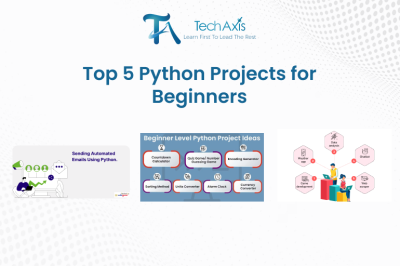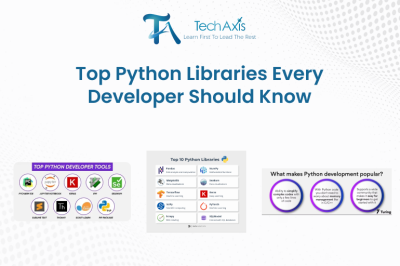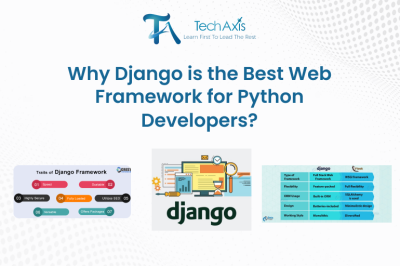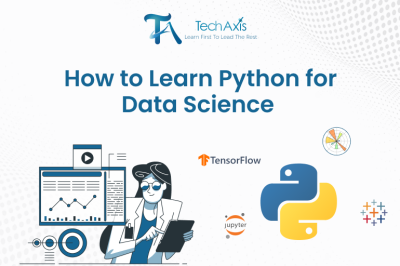Introduction
TechAxis Python and Django Training in Nepal is expertly crafted to give you both the foundational knowledge and advanced skills necessary to excel in the competitive field of web development. Whether you’re a complete beginner, looking to upgrade your existing skills, or aiming to streamline your organization's development processes, our course delivers exactly what you need to succeed in today’s tech-driven landscape.
Imagine building robust, scalable web applications with ease, mastering the backend while seamlessly integrating front-end technologies. Python and Django aren't just popular; they’re shaping the future of web development.
You'll start by mastering the fundamentals of Python programming. From basic syntax and data structures to advanced concepts like object-oriented programming and functional programming, you'll gain a solid foundation.
Building on this foundation, you'll delve into the powerful Django framework. Learn how to build robust web applications quickly and efficiently, utilizing Django's powerful features like the Model-View-Controller (MVC) architecture, ORM, and templating engine.
By the end of this course, you'll be able to:
- Build Full-Stack Web Applications: Design and develop end-to-end web applications, from the frontend to the backend.
- Master Python Programming: Gain a deep understanding of Python's syntax, data structures, and core concepts.
- Leverage Django's Power: Utilize Django's powerful features to build scalable and maintainable web applications.
- Implement Robust Security Measures: Protect your web applications from vulnerabilities and attacks.
- Deploy Web Applications to the Cloud: Deploy your applications to cloud platforms like Heroku and AWS.
Course Overview
TechAxis isn’t just another training institute; we are a leading IT education provider in Nepal, recognized for offering cutting-edge programs that keep pace with the latest industry standards. Our Python and Django Course in Nepal stands out because of its structured curriculum and practical approach, making it the best Python and Django training in Nepal. Whether you prefer online training or in-person classes, this course is your gateway to mastering web development from a top institution.
As the tech world evolves, the demand for web developers with Python and Django expertise is skyrocketing. Companies increasingly seek professionals who can develop high-performance, secure web applications using these powerful tools. At TechAxis, we ensure you don’t just learn how to code but are well-equipped to handle real-world web development projects.
Our Python and Django Training Course in Nepal is meticulously designed to guide you through all aspects of web development, from mastering Python programming to building complex, dynamic web applications using the Django framework. Whether you’re an aspiring developer or an experienced programmer looking to sharpen your skills, this course will provide you with the essential tools and techniques, preparing you to tackle real-world challenges with confidence.
Objectives of the Python and Django Training Course
With the rising demand for web developers skilled in Python and Django, the IT industry in Nepal is actively seeking professionals who can build fast, secure, and scalable web applications. The primary objective of our Python and Django Course at TechAxis is to equip you with the essential skills and deep understanding required to excel in modern web development.
By the end of this course, you will have mastered Python programming fundamentals, Django framework, and how to develop dynamic web applications. You will be proficient in creating clean, maintainable, and scalable code, while also understanding web development concepts such as database management, security, and API integration. What sets TechAxis apart is our emphasis on practical learning, ensuring that you not only grasp the theoretical aspects but also gain hands-on experience by working on real-world projects.
We offer 100% practical, professional, and advanced Python and Django training through both online and in-person classes. For those who prefer learning remotely, our Python and Django Online Course is designed to provide you with a comprehensive understanding of full-stack web development, including hands-on experience with live projects. With guidance from our experienced instructors, we ensure our students are well-prepared to secure internships or jobs in IT companies both in Nepal and internationally. Feel free to reach out for more information.








